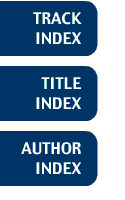
Track: Application Development
Analyzing Directed Networks from the Desktop

Eddie SpeerMany geographic data sets are comprised of directed networks. Drainage networks are specifically directed, as the elements normally carry water in one direction only. Compare this to water distribution networks, where pipes carry water in either direction, depending on the pressure difference. Street networks generally carry traffic in one or both directions, and attributes are required to describe the rule for each record. For drainage networks, most implementations of the ArcInfo database use inherent "arc direction" as the direction of flow. A common analysis using GIS in these kinds of networks is to study the flow pattern, either from a single source point, and tracing its path to an outlet, or from an outlet or sampling point, and tracing all the pipes that would serve that single outlet point. The latter can be used to delineate basins. ArcInfo provides this kind of analysis through an extension product called ARC NETWORK. This extension contains many useful functions for street networks including allocation/location, minimum cost paths, creating travel directions, and gravity modeling. However, for drainage networks, these functions are seldom helpful, with the exception of the TRACE function. The subject of this paper is to explore the possibilities of a TRACE function outside the ARC NETWORK extension and to demonstrate two case studies where alternatives were used.
Eddie Speer
Reid Crowther Consulting, Inc.
155 NE 100th St
Seattle, WA 98125
USA
Telephone: (206) 524-7330
Fax: (206) 526-8677
E-mail: eddie@brewery.wa.com